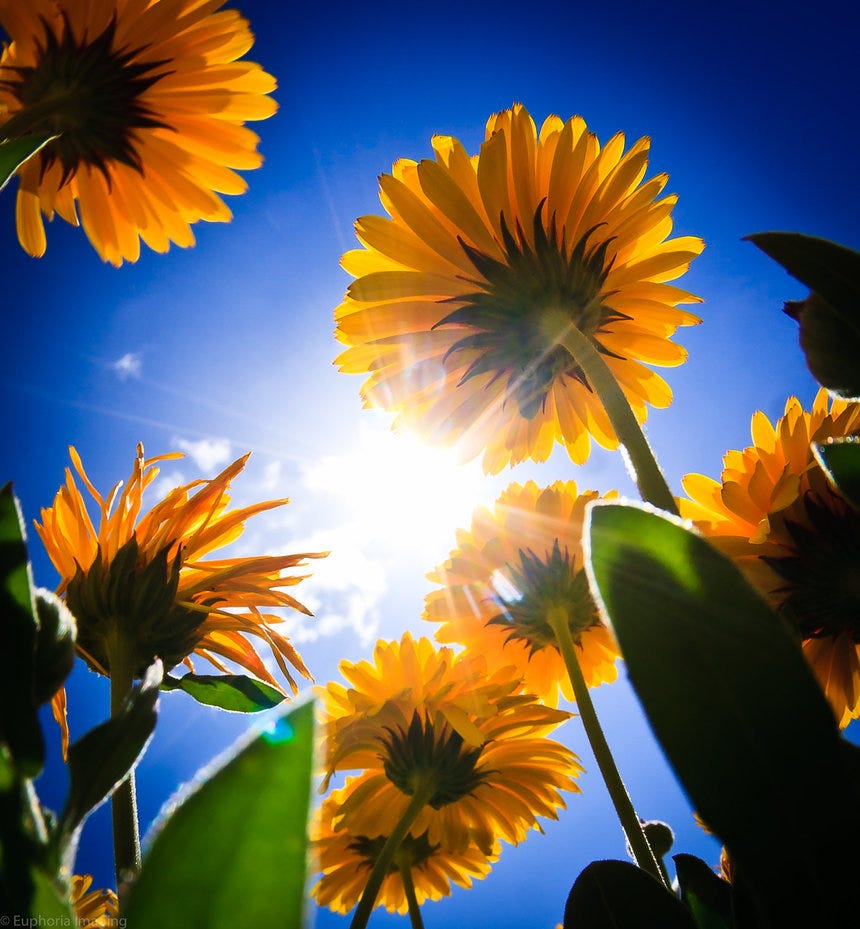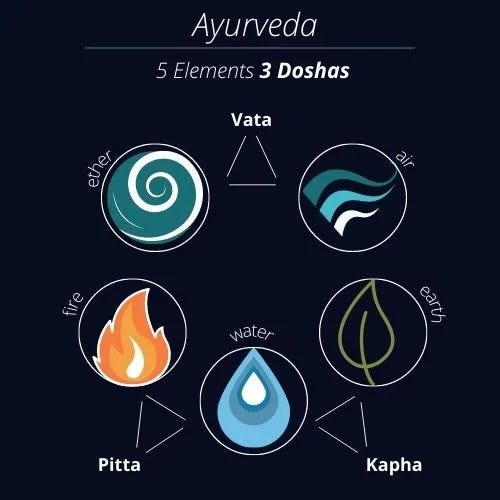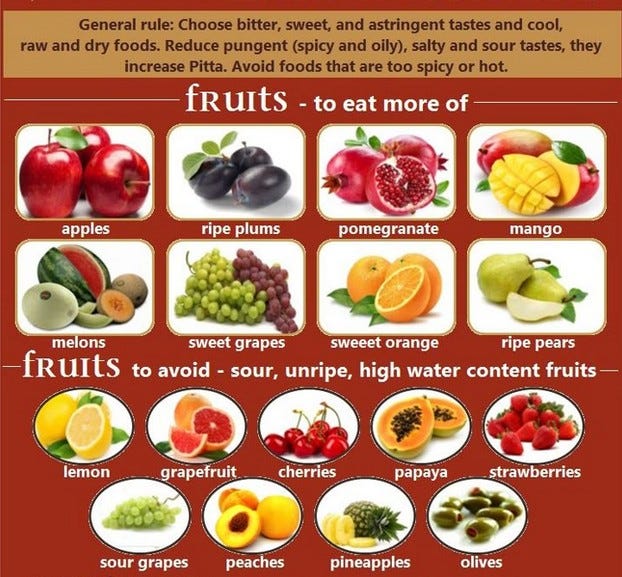As the summer solstice nears, most of the northern hemisphere has moved from the damp (snowy) cold of early spring to the first warm days of late spring/early summer. Transitions between the seasons can be difficult on our systems, and are frequently associated with colds. Recalibrating our daily habits and diets can help our bodies stay in tune with the seasonal changes (and ward off illness!). As long as the weather is cool and damp, warming and grounding foods are still a good choice. But as soon as the temperatures heat up, we instinctively switch to cooling foods and activities to help us move more comfortably through the hot Pitta season.
What is Pitta?
In Ayurveda, there are five primal elements, or “states of existence”: air, water, fire, earth, and ether (space). Similar to the beliefs of many ancient cultures, Ayurvedic practitioners say these five elements make up everything and describe all the possible interactions of matter and energy. Each element is associated with certain qualities. When these elements manifest in the body, they are condensed into three metabolic forces, or doshas.
There are three doshas in Ayurveda: Vata, Pitta and Kapha. Everyone is a mix of the three doshas to varying degrees, ranging from predominantly one dosha to an equal number of all three (tri-doshic).
The Pitta dosha is a combination of the fire and water elements. Ayurveda assigns “qualities” to the Pitta dosha that include hot, oily, light, liquid, mobile, sharp, soft, smooth. These qualities apply to both physical and other attributes. Some are more obvious than others. “Hot” can refer to the weather, skin temperature, or a quick-to-anger attitude. Sharp relates to intellect while soft, smooth, and oily correspond to hair or skin. Mobile manifests as a more active constitution (as opposed to Kapha’s tendency to be more sedentary/grounded). When Pitta is in excess, it can mean overheating, aggression, overwork, or even hyper-competitiveness.
A person with a strong Pitta constitution has an mesomorph body type, with an athletic, muscular build and efficient metabolism. They also tend to have fine and/or early-to-grey hair and oilier skin. Within a calendar year, Pitta seasons occur from mid-spring through late summer as evidenced by hot, humid weather.
Curious about what your personal dosha is? Click here to find out.
Like increases like
One of the tenets of Ayurveda is "like increases like." For example, if you have a Pitta dosha, or tend to easily overheat or be overactive, mid-spring to late summer can exacerbate those qualities in you. To counter an excess of Pitta, you'll want to balance your system with practices and foods that are cooling, drying and relaxing.
Ways to balance the Pitta dosha
Pitta-calming practices. Too much Pitta energy can lead to overheating, exhaustion, or burnout. If you are a Pitta type, or have been indulging in a lot of Pitta energy (like fun runs or outdoor concerts), the following practices can help counter an excess of hot, light, active Pitta:
Time by the water. Spending time either by or in the water is a great way to counter the heat. If you have access to it, flowing water is best!
Hydration. Heat and excess sweating can take a toll. Filtered water and coconut water are great choices. (Alcohol and caffeine increase heat in the body and aren’t recommended.)
Moderation. Pitta’s “go! do! now!” energy can be intense. Balance a lot of activity with calming practices such as deep breathing, meditation, or listening to relaxing music.
Rest. With all the activity of summer, it’s important to balance with plenty of good rest. Seek out a shade tree and indulge in some daydreaming.
If these tips seem obvious, it’s because you’ve been doing at least some of them for most of your life! When it’s hot, we seek ways to cool off. Foods like watermelon and cucumber are obvious choices for cooling the body. Other Ayurvedic food choices may not be as apparent, but are still beneficial.
Pitta-soothing foods. One of the simplest ways to balance Pitta is by eating sweet (as opposed to sour), bitter, and astringent herbs and foods.
“Sweet” foods include not only most fresh fruits, but also grains, squash, root vegetables (think sweet potatoes), milk, and fresh yogurt. Fruits that aren’t sour (berries) or acidic (pineapple) are the best for Pitta such as apples, coconut, cucumbers, dates, figs, grapes, mangoes, melons, and pears.
Astringent foods “dry out” the damp heat of Pitta, and in the words of my teacher, Michael Tierra, "tighten and tone soggy tissues." If your mouth has ever puckered from eating an unripe banana or spinach, you're familiar with astringency. Other astringent foods include beans, cranberry, and pomegranate.
Bitter foods are also drying. Bitter foods purify the blood, and stimulate the secretion of bile from the liver and gall bladder as well as peristalsis. (Hands up: how many people drink coffee (a bitter) because it "keeps them regular"?) As with anything, it's possible to have too many bitters, but also highly unlikely in the Western diet. Other bitter foods that counter Pitta are beets, broccoli, dark greens like chard, arugula, and dandelion leaves, zucchini and cauliflower.
Foods to avoid include sour foods (like lemons, pickles and berries), pungent or hot-spicy herbs and foods, salty or oily foods, and white sugar.
So if the summer heat is getting to you, know that eating watermelon and running through sprinklers is healthy as well as fun for both the young and young-at-heart!
Originally written June 2018; edited June 2025.
To read about the other Ayurvedic seasons, click here.







